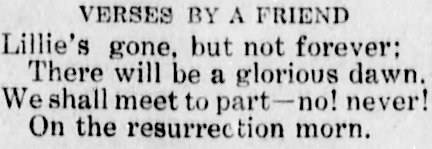Before I forge ahead with more of the Oklahoma Road Trip 2019, I want to pause a moment to recognize something important. In January 2023, Adventures in Cemetery Hopping will mark its 10th anniversary.
My son Sean started kindergarden in fall 2012, so I had more time on my hands. I wasn’t going back to work because I wanted to be available if he needed me or to volunteer at his school.
But it felt like it was time for something new.
In November 2012, I decided to try being a photo volunteer for FindaGrave.com. You’ve heard me talk about them before. If you are hoping to find a photo of the grave of a friend or loved one, chances are that Find a Grave has it. I learned that they needed people to volunteer to take pictures of graves.
That got my attention. I like history. I like helping people. Let’s try it!
A Tale of Two Cemeteries
I had no idea that this action would be the first step toward starting my blog and spending the next year exploring cemeteries, researching them, and sharing the stories behind the stones.
The first blog post I wrote in January 2013 was about my first official “hop” in Nebraska in January 2009, which was three years before I started doing any Find a Grave work. It was a quest to find the graves of my distant relatives in Blair, Neb.
But the next one came from a November 2012 visit I made to two cemeteries in Fulton County, Ga. They were Rogers Cemetery and Rogers-Bell Cemetery in Johns Creek. Below you can see pictures from that 2012 visit to Rogers-Bell Cemetery and a visit from April 2020. I was looking for a grave at Rogers-Bell that needed to be photographed for Find a Grave, the deceased had died in 2012.

I had no idea what I was doing when I went in search of Rogers-Bell Cemetery that day. I wound up down the road at Rogers Cemetery, which had no fancy iron gates or a nice fence amid million-dollar homes. It was bitterly cold, so after wandering around a bit, I went to Mellow Mushroom to warm up then headed home with intentions of returning the next day.
I found Rogers-Bell Cemetery the next day. I learned that the folks buried at Rogers Cemetery were the descendants of the slaves that had worked on the Rogers-Bell plantation down the road. There were a few former slaves at Rogers Cemetery that had continued to work there after the Civil War. I researched the families and realized there was quite a story there.

Birth of a Blog
When I started thinking of all the history that was in those two cemeteries, the wheels in my head began to turn. My background is in writing and editing. I stopped working shortly after my husband and I moved back to Atlanta after he got his law degree at Vanderbilt University in Nashville, Tenn. in 2005. While I continued to do some freelance work, I was itching to write again and not about mom life.
Not that mom life isn’t important because as someone who is living it, I know the challenges that life presents. But in 2012 (and now), there were a million “Mommy” blogs. I didn’t feel like I had much to share that hadn’t been written already. But cemeteries? There weren’t a lot of people doing that. Plus, I’d get to learn about history along the way and I’ve always enjoyed that.
But would anybody read it?
Let me be real. I’m not pulling down millions of hits every day. I still don’t. But that’s okay.
In 2012, 4,379 people visited my blog page. That number doubled in 2013. Slowly, the numbers went up. That made me happy. At least more people than my family and a few friends were reading it.
Between 2019 and 2020, the number of visits went from 33,649 to 30,566. But in 2021, they went up to 38,189. Then in 2022, they went down a little to 36,135 (as of 12/21/2022).
I’m probably never going to be a “hot blogger” whose numbers skyrocket each year. That means advertising, media campaigns, and other things I’m not willing to do. Because to me, it’s not about the numbers. It’s always been about the stories behind the stones.
Yes, I’ve made some mistakes along the way. I thought I should be writing about “funeral trends” and I did a bit of that. I wrote about BIOS urn, human composting, and alkaline hydrolysis (now called “flameless cremation’). I did enjoyed that and felt I educated some folks along the way.

But in the end, it always came back to the stories about the people buried in the cemetery I visited. Some of these folks have nobody left to visit their graves and remember them. Some lived very ordinary lives. However, their lives still are important. They made a difference. Even the little baby who died the day he was born. His mother wept tears, having carried him for nine months. She never forgot him.
I still love what I do. As I told Marisa D. of the Victorian Variety Show podcast a few weeks ago, I never know what I am going to find when I visit a cemetery. I don’t know what stories I’ll uncover from the photographs I take. It is always something new. It never gets old.
Here’s to Another 10 Years!
So until something dramatic changes to point me in another direction, I’m going to continue doing what I feel God is leading me to do. To use my writing gifts to share stories from cemeteries that I visit and put them here.
I hope you’ll continue to “hop” with me on my adventures.












































